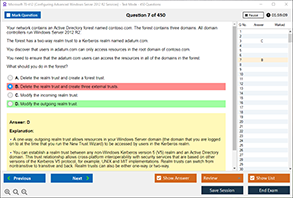Introduction
In the rapidly evolving world of software development, ensuring the integrity and authenticity of code is more critical than ever. As cyber threats continue to increase in sophistication, developers and organizations alike must take steps to safeguard their code and prevent malicious activities. One of the most effective ways to protect code from unauthorized alterations and ensure trustworthiness is through the use of digital signatures for code signing.
A digital signature is a cryptographic mechanism that provides proof of the identity of the software publisher and ensures that the code has not been tampered with during its distribution. This process of code signing with a digital signature enhances security, fosters trust among users, and helps prevent various security risks. In this blog, we’ll explore the purpose of using digital signatures for code signing, why they are necessary, and how they protect both developers and end-users.
What is Code Signing?
Before diving into the purpose of digital signatures for code signing, it's essential to understand what code signing actually entails. Code signing is the process of adding a digital signature to a software program, which includes executable files, scripts, or other types of software code. By attaching a digital signature to a file, the developer guarantees that the code has not been altered or corrupted in any way after it was signed.
Code signing involves using a cryptographic key pair: a private key to sign the code and a public key to verify the authenticity of the signature. The digital signature essentially acts as a certificate of authenticity, allowing the recipient of the code to verify that it came from a legitimate source and has not been tampered with.
The Role of Digital Signatures in Code Signing
A digital signature serves multiple purposes when applied to code signing. Let’s break down the key functions:
-
Authentication of Code Publisher
The primary function of a digital signature is to verify the identity of the code’s publisher. When users download software, they want to be sure that the code comes from a trusted source. A digital signature helps authenticate the publisher, ensuring that the code has been signed by a legitimate entity, such as the developer or software company behind the application.
-
Integrity of the Code
Integrity is another crucial aspect of code signing. The process ensures that the code has not been tampered with or altered since it was signed. If any part of the code is modified after being signed, the digital signature becomes invalid, and the system will alert the user of potential malicious activity. This prevents the distribution of corrupted or malicious code that could harm the system or compromise sensitive data.
-
Protection Against Malware and Malicious Alterations
Digital signatures provide an effective means to protect software from being infected with malware during distribution. When code is signed, it is protected from unauthorized changes or injection of malicious content. If malware tries to modify the code after it has been signed, the digital signature will become invalid, and users will be warned before running the potentially harmful program.
-
Trust and User Confidence
For developers and organizations, the use of digital signatures can enhance trust with end-users. When users see that a program has been signed with a valid digital signature, they are more likely to trust that the software is secure and authentic. Conversely, if a program lacks a signature or has an invalid signature, users may be wary of installing or running it, as they cannot verify its authenticity.
How Does Code Signing Work?
Now that we understand the purpose of digital signatures for code signing, let’s take a closer look at how the process works.
-
Obtaining a Code Signing Certificate
The first step in code signing is obtaining a code signing certificate from a trusted certificate authority (CA). The CA is a third-party organization that vouches for the authenticity of the certificate and the identity of the publisher. The certificate contains a public key and is used to verify the integrity and authenticity of the software.
-
Signing the Code
After obtaining a code signing certificate, the developer uses the private key to sign the code. This key is kept secure and private to ensure that only the legitimate publisher can sign the code. The signing process involves applying a cryptographic hash function to the code, which produces a unique hash value. The private key is then used to encrypt the hash, producing the digital signature.
-
Distributing the Code
Once the code is signed, the developer can distribute it to users. The digital signature remains with the software, allowing users to verify its authenticity and integrity before installation or execution. If the software has been tampered with, the signature will not match, and the system will alert the user.
-
Verifying the Signature
When a user attempts to install or run the software, their system will verify the signature. It does this by decrypting the signature with the public key associated with the code signing certificate. If the signature is valid and matches the code, the software will be considered trustworthy. If there is any discrepancy, the system will warn the user.
Benefits of Using Digital Signatures for Code Signing
There are several compelling reasons why developers and organizations should adopt digital signatures for code signing. Let’s examine some of the top benefits:
-
Enhanced Security
Digital signatures provide an additional layer of security to software distribution. By ensuring that the code has not been altered or tampered with, digital signatures prevent the distribution of malware or other malicious modifications.
-
Increased User Trust
Digital signatures help build trust between software developers and end-users. When users see a signed application, they are more likely to trust it, as they can be confident that it is from a verified and trusted source.
-
Compliance with Security Standards
Many industries require the use of code signing to comply with security standards and regulations. For example, software distributed to government agencies, healthcare organizations, and financial institutions often requires digital signatures to meet compliance requirements.
-
Preventing Distribution of Unverified Code
Digital signatures prevent the unintentional distribution of unverified or modified code. This is especially critical for developers who are distributing updates to existing software, as it ensures that users receive only the official, unchanged version.
-
Reducing the Risk of Cyberattacks
By preventing the distribution of tampered or malicious code, digital signatures reduce the risk of cyberattacks, such as those involving ransomware or data breaches. They act as a safeguard against unauthorized alterations and provide an extra layer of protection for both developers and end-users.
Conclusion
In today’s interconnected world, digital signatures for code signing play a crucial role in ensuring the authenticity and integrity of software. They provide security, increase user confidence, and help developers build trusted applications. By signing their code, developers protect their users from potential security risks, such as malware, and ensure that the software they release is tamper-proof.
For developers and organizations looking to distribute secure and trustworthy software, using digital signatures for code signing is no longer optional—it is a necessity. At DumpsQueen, we emphasize the importance of adopting best practices for software security and ensuring that your applications are signed with trusted digital certificates.
Free Sample Questions
1. What is the primary purpose of using digital signatures for code signing?
A) To compress the code for faster downloads
B) To verify the identity of the publisher and ensure code integrity
C) To encrypt the code for secure transmission
D) To optimize the code for better performance
Answer: B) To verify the identity of the publisher and ensure code integrity
2. How does a digital signature help protect software from malware?
A) It speeds up the installation process
B) It encrypts the code to make it unreadable
C) It ensures the code hasn’t been altered or tampered with since it was signed
D) It prevents unauthorized users from downloading the software
Answer: C) It ensures the code hasn’t been altered or tampered with since it was signed
3. What happens if the digital signature on a piece of software is invalid or missing?
A) The software will automatically fix itself
B) The software is considered trusted and will run as normal
C) The software will not be installed or executed, or users will receive a warning
D) The software will be automatically updated to a secure version
Answer: C) The software will not be installed or executed, or users will receive a warning



